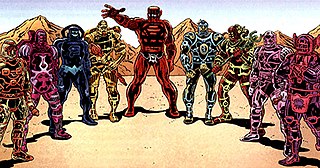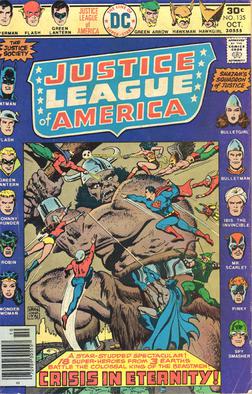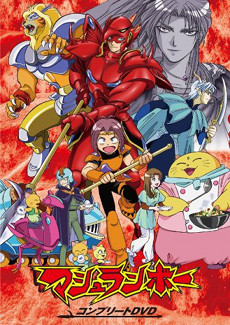
Sir Terence David John Pratchett was an English humorist, satirist, and author of fantasy novels, especially comical works. He is best known for his Discworld series of 41 novels.

Strata is a 1981 science fiction comedy novel by Terry Pratchett. It is one of Pratchett's first novels and one of the few purely science fiction novels he wrote, along with The Dark Side of the Sun.

Kryptonians are a fictional extraterrestrial race within the DC Comics universe that originated on the planet Krypton. The term originated from the stories of DC Comics superhero, Superman. The stories also use "Kryptonian" as an adjective to refer to anything created by or associated with the planet itself or the cultures that existed on it.

The Celestials are fictional characters appearing in American comic books published by Marvel Comics. Depicted as cosmic beings, they debuted in the Bronze Age of Comic Books and have reappeared on numerous occasions.

The Discworld is the fictional setting for all of Terry Pratchett's Discworld fantasy novels. It consists of a large disc resting on the backs of four huge elephants which are in turn standing on the back of an enormous turtle, named Great A'Tuin as it slowly swims through space. The Disc has been shown to be heavily influenced by magic and, while Pratchett gave it certain similarities to planet Earth, he also created his own system of physics for it.

Ego the Living Planet is a fictional character appearing in American comic books published by Marvel Comics. The character first appeared in Thor #132 and was created by writer Stan Lee and artist Jack Kirby.

The Squadron of Justice was a name used by two superhero teams of characters who originated from Fawcett Comics. Each team only made one appearance in a single story.

Shinzo, known as Mushrambo in Japan, is an anime television series produced by TV Asahi, Toei Advertising, and Toei Animation. It was directed by Tetsuo Imazawa, with Mayori Sekijima handling series scripts, Sachiko Kamimura designing the characters and Katsumi Horii composing the music. In the series, genetically-altered creatures known as Enterrans take over Earth and rename it in their own image called Enterra. Now three Enterrans have to protect the last human in order to find the hidden sanctuary called Shinzo and restore the human race. The anime focuses primarily on the adventures they undergo while working to accomplish this task, though battle action becomes the main focus in the middle of the series. Due in part to the popularity of Hunter × Hunter in some areas in the competing timeslot, the series struggled with an average viewership of 3.5%, and was cancelled. In the United States, the anime was licensed and dubbed by Saban Entertainment & Buena Vista Television.

The Saga of Seven Suns is a series of seven space opera novels by American writer Kevin J. Anderson, published between 2002 and 2008. The books are set in a not-too-distant future where humans have colonized a number of other planets across the galaxy, thanks in part to technological assistance from an ancient alien race, the Ildirans. The series chronicles the universe-spanning war that erupts when humans inadvertently ignite the fury of a hidden empire of elemental aliens known as the hydrogues. Internal conflict is sparked within both the human and Ildiran empires as other ancient elemental races reappear to renew their own ancient war with the hydrogues.

The Fatal Five is a supervillain team of the 30th century in the DC Comics universe. They were created by Jim Shooter and first appeared in Adventure Comics #352 (1967) as enemies of the Legion of Super-Heroes.
The fictional portrayal of the Solar System has often included planets, moons, and other celestial objects which do not actually exist in reality. Some of these objects were, at one time, seriously considered as hypothetical planets which were either thought to have been observed, or were hypothesized to be orbiting the Sun in order to explain certain celestial phenomena. Often such objects continued to be used in literature long after the hypotheses upon which they were based had been abandoned.
The sixth season originally aired between July 29, 2006, and October 27, 2007, beginning with the "Future Shellshock" episode. The season is lighter in tone and less violent than previous ones, with a greater emphasis on jokes, and includes recreated designs for all returning characters.
"I, Cthulhu" is a short humorous story by fantasy author Neil Gaiman featuring H. P. Lovecraft's Cthulhu, who is dictating an autobiography to a human slave named Whateley. The story reveals much about Cthulhu's 'birth' and early life.

Silicon Dreams is a trilogy of interactive fiction games developed by Level 9 Computing during the 1980s. The first game was Snowball, released during 1983, followed a year later by Return to Eden, and then by The Worm in Paradise during 1985. The next year they were vended together as the first, second and last of the Silicon Dreams.

The Saga of Shadows is a trilogy of space opera novels written by Kevin J. Anderson. First announced in 2011, it is a sequel to Anderson's seven-book series, The Saga of Seven Suns (2002–2008). The first novel, The Dark Between the Stars, was released by Tor Books on June 3, 2014. The second book in the series, Blood of the Cosmos, was published on June 2, 2015. The third novel, called Eternity's Mind, was released on September 13, 2016.










